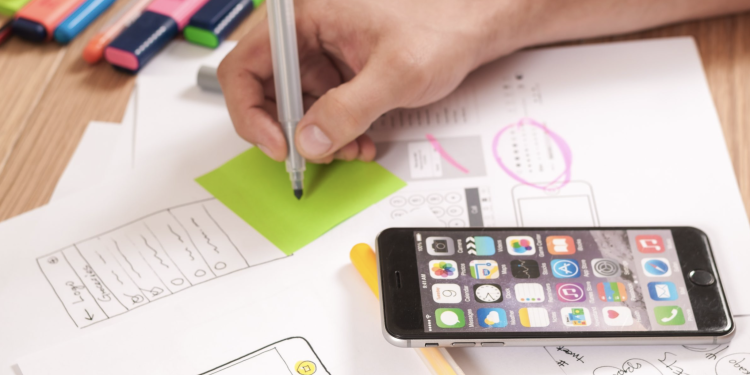Designing, producing, and selling a mobile app is a fantastic way to make extra income in your spare time. A successful app that is widely used can eventually create a significant income stream. Virtually any topic, service, or interest can be used as the basis for a new app. Creativity, ingenuity, and ease of use will help to ensure that the app becomes successful, especially in a marketplace that is becoming more crowded every day. By understanding and implementing the following tips and advice, the likelihood of making the next app phenomenon will be increased.
Determine and research your target market
Every successful mobile app must be designed to appeal to its intended target market. Before the app design stage begins, there must be a deep understanding of the target market that the app will serve. A good starting point is to look at competitors’ apps for similar services or offerings to what you intend to produce. Use these apps and consider what functions well and where there are opportunities to improve design or functionality. To understand the market, you plan to operate in, especially to ensure sufficient demand for the app, use google trends as one of your starting points for market research. Here you can gain a thorough understanding of trending services and products. For example, a quick search at the time of writing showed that since the beginning of 2022, dating apps have surged in popularity in the United States, although the current predicted trend is that of decline. Another way to improve your understanding of the market is to use keyword planning tools in your market research, such as google keyword planner. This will allow a good understanding of the competition and demand for various topics and will help to drive the promotion part of the app strategy.
Make a wireframe of the complete app layout
Building an app is like designing a building. Before any bricks are laid, the first step is to have a sound plan for your complete design. Before any code is laid down in an app, there must be a complete understanding of all the intended screens and functions that the app will have. This process is called making a wireframe, and it will give you a visual representation of the entire structure of your app, how it is meant to look, and how each screen will link together in the full program.
Ensure you have the required skills to create the app
A successful app needs to function smoothly, be user-friendly, and work with the vast majority of mobile devices’ intended target markets. A badly programmed app will be likely to cause crashes due to coding bugs and generally poor design. Poorly coded apps may also run slowly on devices. Potential customers will quickly uninstall an app that does not function effectively, so it is imperative that the coding is well produced. If you are initially planning to design and create the app yourself as a one-man team, the onus is on yourself to be suitably adept in coding and design to be able to deliver a seamless and slick final product. If you plan to design the app completely in-house as a one-man team, you must ensure that your coding and software creation knowledge are up to date. If you already have an IT-related degree but need extra knowledge and skills, an online masters in software engineering will ensure that the software you produce is fit for your purpose and will function effectively on the intended mobile platforms. If your app project is on a larger scale and the coding and programming is not done by yourself, ensure that the staff you hire have the required qualifications. Request portfolios of previously completed work as part of the recruitment process that demonstrates their ability to produce what is needed.
Consider three key success factors
It is a fact that every phenomenally successful mobile app, from TikTok to Tinder, shares similar design and functionality traits. Here are just three of the most important design and coding aspects of any mobile app that will ensure they are extensively used and enjoyed.
Crashes and freezes are kept to an absolute minimum
The coding of the app must be robust and designed to minimize crashes or screen freezing. Quality assurance testing is of vital importance before the finished app is rolled out into the marketplace. Every keen gamer will remember the problems encountered during the launch of the video game Cyberpunk 2077. It was a hotly tipped game of the year contender in 2020 but rushed testing led to a final product that needed several patches to improve the severe problems with crashes, glitches, and popups. As a result, many consumers sought out refunds as they believed the final product was not fit for its purpose. Ensuring that your app coding is robust is key to ensuring customer satisfaction.
Minimize battery drain
Another pain point for mobile app consumers is the power drain on their mobile devices. This factor is often overlooked, but an app that saps a phones battery in a matter of hours is likely to reduce the satisfaction of the target market users. This factor should be considered alongside the robustness and stability of the coding process and not as an afterthought.
Provide regular updates and upgrades
All successful apps need a roadmap of upgrades and fixes. An app may be perfectly functioning on launch, but over time on newer handsets, there may be compatibility issues to address or device-specific bugs. These must be regularly addressed to ensure that the app continues to function perfectly. As times change, so do trends and tastes. Regular updates to the app will also ensure that the overall designs and layouts of the app interface stay consistent with the styles and the preferences of the intended target markets.
By following these key points in the design, coding, and ongoing roadmap of your app, you will help to ensure the success of your app.







